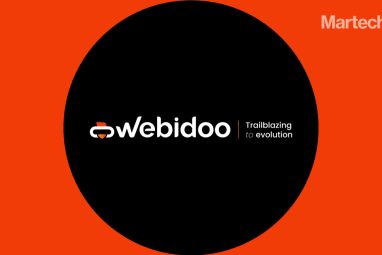Solving Measurement Challenges While Respecting User Privacy: Comscore Report
Media measurement and analytics company ComScore published a report exploring the future of app measurement and app tracking transparency. The report provides critical insights for publishers and advertisers navigating privacy changes including iOS14.5 and Apple’s App Tracking Transparency framework. The past several years have seen significant evolution in both the web browser environment and the […]
Topics

Media measurement and analytics company ComScore published a report exploring the future of app measurement and app tracking transparency.
The report provides critical insights for publishers and advertisers navigating privacy changes including iOS14.5 and Apple’s App Tracking Transparency framework. The past several years have seen significant evolution in both the web browser environment and the ecosystem of regulations, laws, and consumer awareness about privacy.
Here’s what we learned from the report;
What iOS 14.5 Means for Publishers and Advertisers
Apple’s ATT presents users with a request to allow (or not) an app to access a unique identifier (called the Identifier For Advertisers, or IDFA) for their device. An app’s functionality is not affected by the user’s choice. The IDFA is unique to the device and, if available to the app, can be used to link activity the user does in one app with activity the user does in another app. This cross-application activity aids advertisers in understanding a holistic profile of which apps are being used, and how often, by people they wish to target for advertising. ATT gives control to the user as to which apps can use their device’s IDFA.
Without access to the IDFA, targeting, retargeting and attribution become less effective, so it is not surprising that the advertising community, and the content publishers whose businesses they support, have been worried about the effect of the changes. The IDFA requires an opt-in consent on an app-by-app basis presented to the user in the form of a pop-up selector when an app first opens.
Also Read: LinkedIn Continues To See Record Engagement
How Comscore Solves Measurement Challenges
Comscore still collects IDFVs to use as a counter for the number of unique devices accessing content for a given publisher. Comscore’s audience measurement of an app only requires this counter and does not require a cross-publisher identifier like an IDFA for that use case. However, without IDFAs, one challenge is to report unduplicated reach for a parent company that may have multiple app brands or sub-brands and potentially different IDFVs for each brand on the same device.
To understand shared audiences across sub-brands owned by the same parent company, an overlap is needed. That overlap can be observed using IDFAs, but if an IDFA isn’t available, then the overlap must come from elsewhere. In Comscore’s case, the “elsewhere” is their opt-in panel where usage across apps that would have different IDFVs on the same device can still be tied together. With this in mind, for a parent company the loss of IDFAs would have the greatest potential impact on the higher levels of a reported property rather than on any individual apps, sites, or standalone entities. This is because everything under each brand will have the same IDFV.
Because measurements observed from Comscore’s panels remain unaffected by IDFA loss, they can continue meeting expectations for app reporting, with or without iOS 14.5. As per Apple guidelines, Comscore uses IDFV within the context of in-app measurement and no cross linkages are established.
While IDFA was often a convenient choice to provide overlaps, the scale of Comscore’s panels can substitute for the overlap functionality the IDFAs were providing before iOS 14.5. Comscore aggregates the total number of IDFAs and IDFVs when both are available for use. This provides a way to understand the overlap that could suitably be applied to the aggregated number of total IDFVs observed for a parent company. If IDFAs were completely gone, overlaps would then be informed by what is observed by Comscore panelists, who have all consented to be measured.






